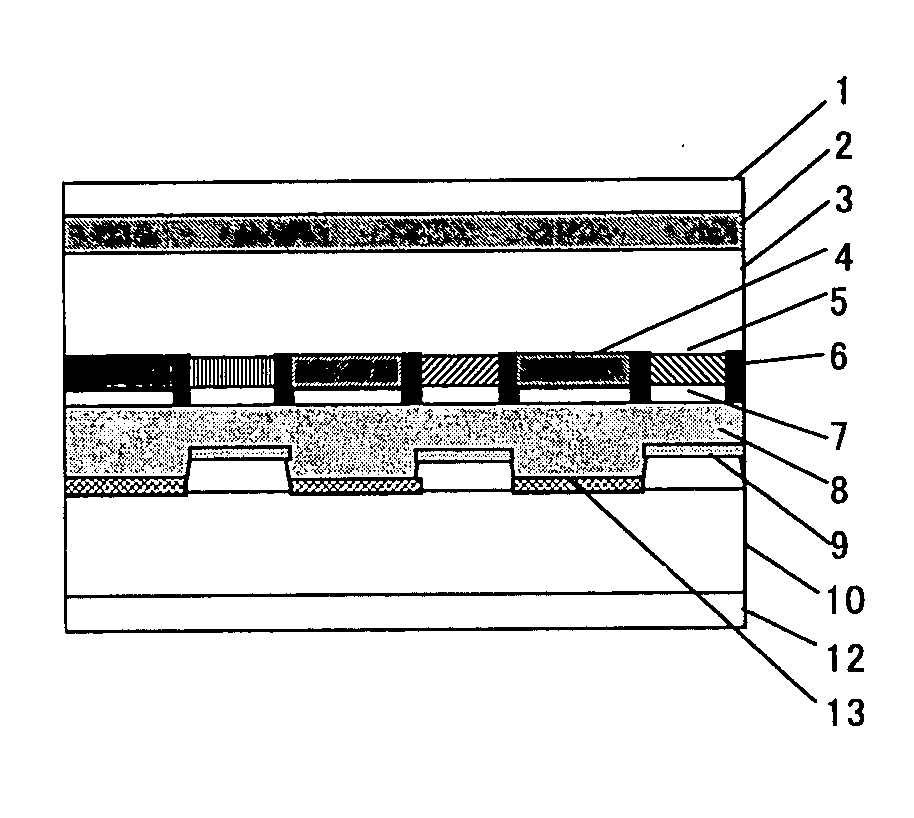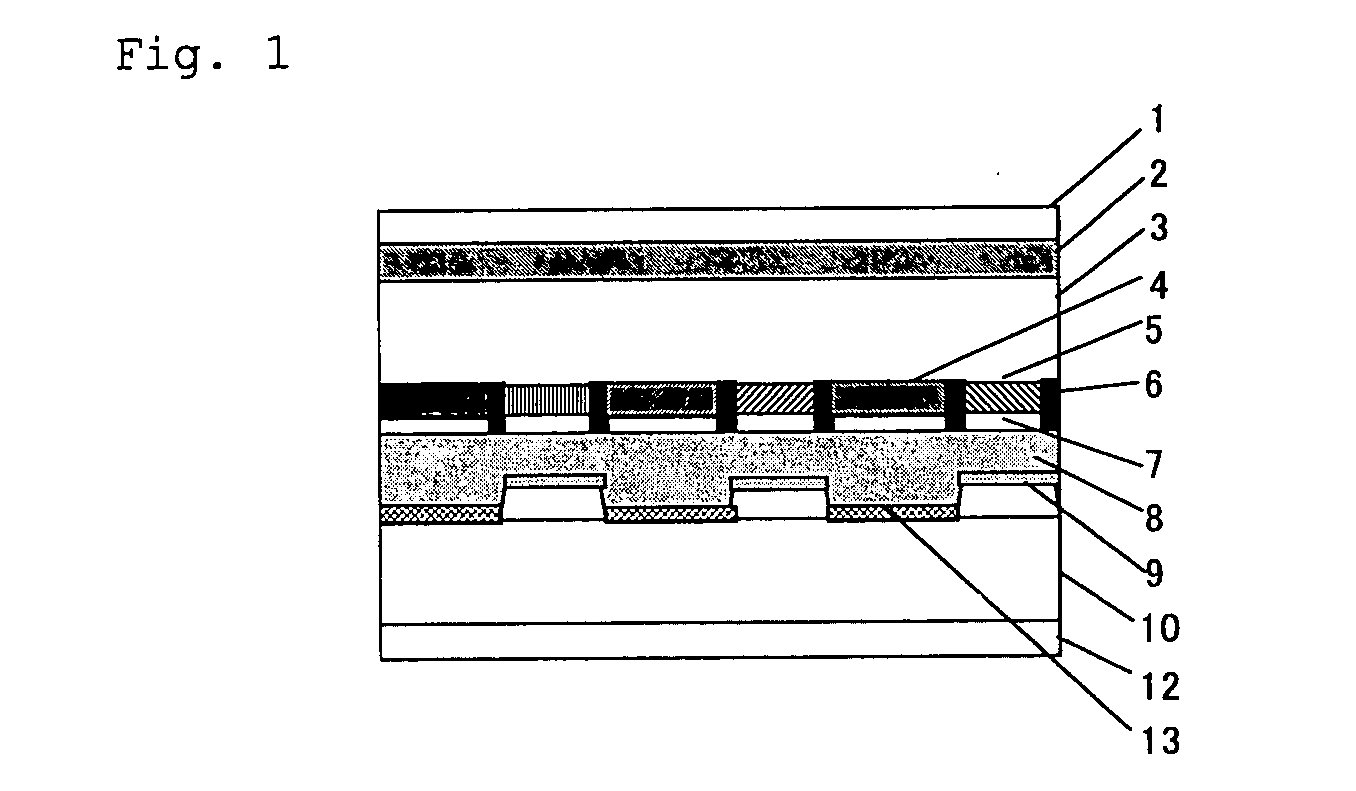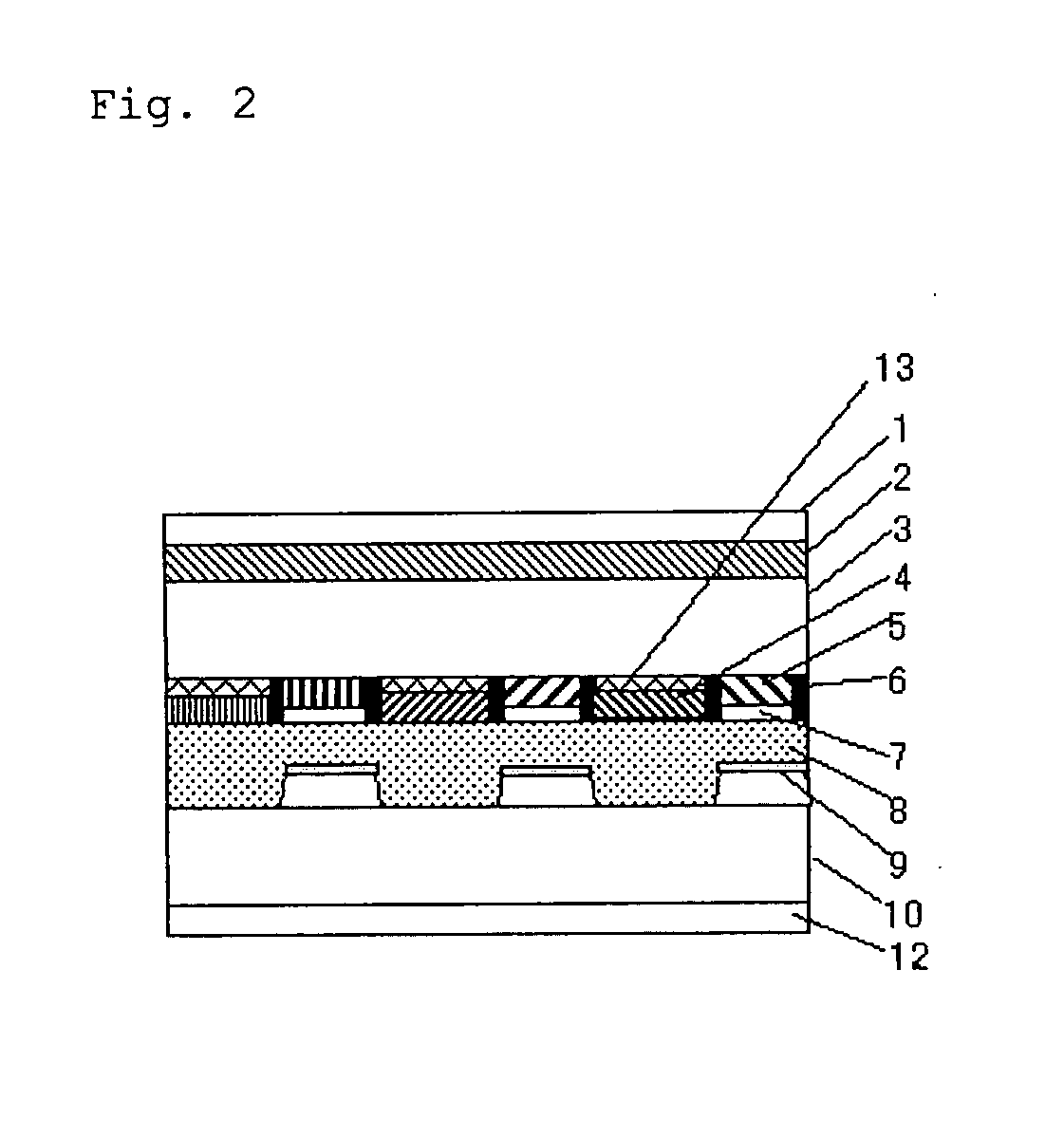Transreflective liquid crystal display
- Summary
- Abstract
- Description
- Claims
- Application Information
AI Technical Summary
Benefits of technology
Problems solved by technology
Method used
Image
Examples
example 1 to 8
(Method for Preparing Black Photosensitive Composition for Producing Barrier Wall)
[0151] A black photosensitive composition K1 was obtained by firstly weighing a K pigment dispersion 1 and propylene glycol monomethyl ether acetate in an amount listed in Table 1, which were mixed at a temperature of 24° C. (2° C.) to be stirred at 150 RPM for 10 minutes, and then weighing methyl ethyl ketone, a binder 2, hydroquinone monomethyl ether, a DPHA liquid, 2,4-bis(trichloromethyl)-6-[4′-(N,N-diethoxycarbonylmethylamino)-3′-bromophenyl]-s-triazine and a surfactant 1 in an amount listed in Table 1, which were added in this order at a temperature of 25° C. (2° C.) to be stirred at a temperature of 40° C. (2° C.) at 150 RPM for 30 minutes. Here, the amount listed in Table 1 is in part by mass, and the detailed composition is as follows.
TABLE 1Carbon black (Nipex 35, manufactured by Degussa)13.1%Dispersant (undermentioned Compound 1)0.65%Polymer (random copolymer of6.72%benzyl methacrylate / m...
PUM
 Login to View More
Login to View More Abstract
Description
Claims
Application Information
 Login to View More
Login to View More - R&D
- Intellectual Property
- Life Sciences
- Materials
- Tech Scout
- Unparalleled Data Quality
- Higher Quality Content
- 60% Fewer Hallucinations
Browse by: Latest US Patents, China's latest patents, Technical Efficacy Thesaurus, Application Domain, Technology Topic, Popular Technical Reports.
© 2025 PatSnap. All rights reserved.Legal|Privacy policy|Modern Slavery Act Transparency Statement|Sitemap|About US| Contact US: help@patsnap.com



